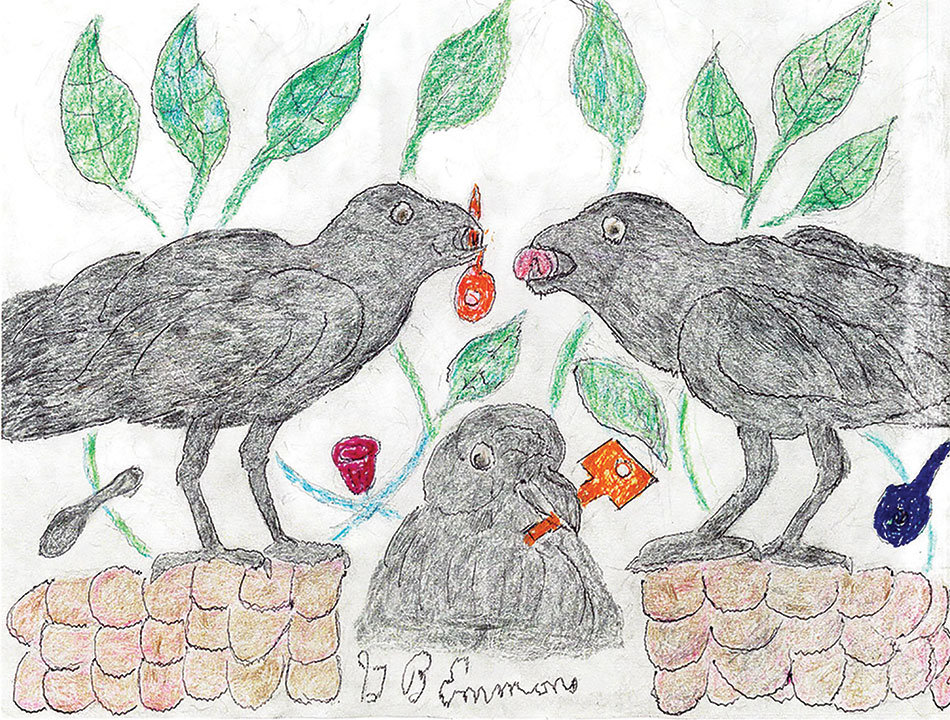The so-called Common Raven is also a high-profile member of Aesop’s fabled birds that is well known for solving difficult puzzles by using tools with the same ability as a human being.
For example, the Raven has been shown to select and hold short sticks in its mouth to use them to probe down into holes of rotten wood to cleverly retrieve insects and ants to be swallowed as a healthy meal. Another use of tools when its nest is approached too closely by visitors, a Raven will pick up a selection of conveniently sized stones to fly overhead and drop them over the heads of an intruder as a serious warning not to come any closer.
As in my illustration, Ravens are just as clever as crows and share with them a curious hobby of collecting shiny objects in a treasure trove under their nearby nest to proudly show it off to visitors.
For example, each Raven is mouthing a car key as well as a 10-cent coin and also a copper penny with Abraham Lincoln’s profile in its mouth. This curious habit of collecting and showing off an array of selected objects is an indication of almost even human intelligence, as well as pride in showing it to visitors.
Long before, the Raven’s reputation was immortalized by Edgar Allen Poe’s poem for literary significance by quoting the expression “never more, Lenore.” The Raven poetry had already established the bird’s dark prophecy of death, pestilence and disease through its own personality and mental frame of mind about superstitions.
Historically, the most-famous, universal belief in medieval thinking was that the royal towers and castle around London Bridge could never be destroyed or damaged by an evil foreign power so long as Ravens occupied its official establishment with their special powers.
The Raven over the years has developed a reputation of superstitious beliefs and expressions that include its own language of guttural gurgling emphasized with metallic-sounding vocabulary that are of their very own.
The intelligence level has been described and evaluated as being on the level of a five-year-old human child. However, the not-so-common Raven will certainly continue to develop and prove itself as an enlightened member of birds in your backyard that is worth reading about in the current Wanderer.
By George B. Emmons
